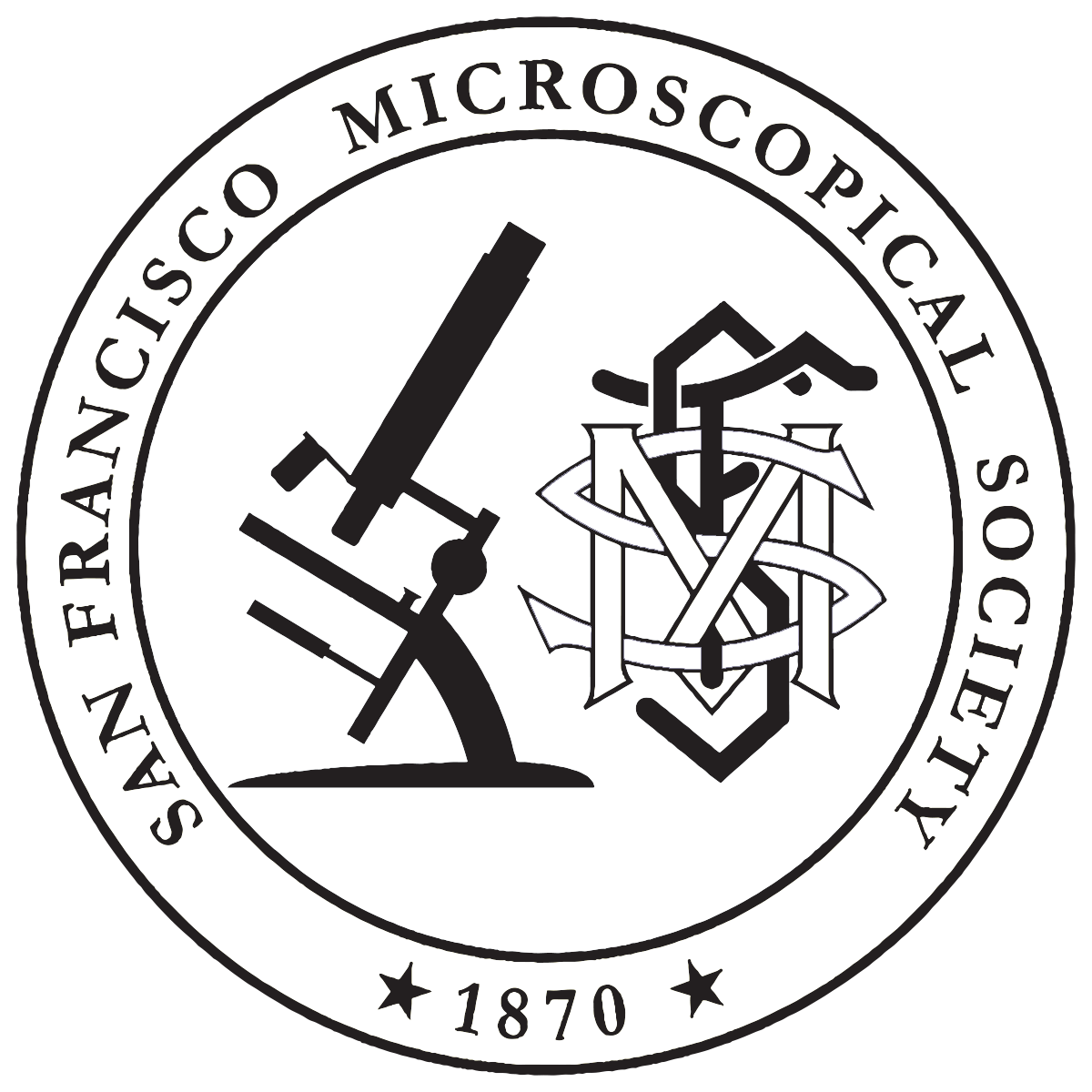MICROSCOPE NOTES and NEWS
Number 1
April 1952
PUBLISHED OCCASIONALLY BY THE SAN FRANCISCO MICROSCOPICAL SOCIETY
SAN FRANCISCO, CALIFORNIA
This is the first of a series of notes to be published by the officers in order to keep the members informed of the activities of the society and of the different members. These notes will also contain a summary of some useful techniques which can be applied to many of the microscopical specialties. The technique chosen for this note is the Rheinberg Differential Color Illumination.
The officers are very much concerned about the very poor attendance at some of the monthly meetings. It is expected that the attendance will vary from season to season and that the meetings must compete with other interests of a busy person, but the attendance of only ten people to a carefully prepared program by a well known expert is a serious matter. The problem of getting members to serve as officers, particularly in the more unpopular posts of secretary and treasurer is not fair as the work involved in these posts dilutes the pleasure that the appointed member gets from belonging to the society. At the present time the office of treasurer is vacant; are there any volunteers?
The officers are trying to reorganize the activities of the society to give more to the members at less work to themselves. The new style meeting announcement is one step and this series of notes is another.
Those members who saw the very fine film on the Phase Contrast Microscope that was all too briefly shown in the area by Mr. W. H. Hartmann, 1508 Divisadero Street, are still remarking on the simple pictorial explanation of phase contrast. The film was produced by the English firm of microscope builders, Cooke, Troughton and Simms, Ltd. x x x x x x Mr. Arthur T. Brice tells us that he is finally ready to make lapse-time motion pictures under the name of Phase Films x x x x x x Silge and Kuhne have now moved into their new quarters at 375 Sutter Street and they are very pleased with themselves about how well their plans turned out x x x x x x There are a few members who regularly take stereo-photomicrographs and their experiences would make an interesting future note if enough members are interested.
THE RHEINBERG DIFFERENTIAL COLOR ILLUMINATION
The Rheinberg method of illumination is similar to that of dark-field except that in the Rheinberg method the dark-field stop has been changed so that the central opaque disk stop is substituted by a colored filter disk and the peripheral ring around the disk stop is a filter of contrasting color. When a colorless object is put into a microscope field illuminated by the Rheinberg method it will stand out brightly against the background with an intensity dependent on its refractive index, reflecting power, size and quantity of light incident upon it. The result is known as optical staining and it gives effects of extraordinary beauty. The sketch shows the method of obtaining this illumination with a microscope equipped with an ordinary Abbe condenser.
The Rheinberg method is especially recommended for the examination of mineral and chemical crystal fragments, diatoms and small living organisms such as rotifers, water fleas and unstained plant sections. The method is also a good method of regulating contrast in photomicrography.
The Rheinberg stops are easily made from colored gelatine filters used in photography and the pieces of gelatine can be cemented on a dark-field stop with a hole punched in the blank central disk or cardboard disks cut to fit the condenser ring.
It is recommended that the first collection of Rheinberg stops include the following color combinations, a blue center stop with a red peripheral ring, a green center stop with a red peripheral ring, a blue central stop with a white peripheral ring, and an opaque center with alternate red and blue sectors in peripheral ring. The sector stop is useful in illuminating striae and ridges against a dark background. It is recommended that the gelatine be of the deep colors so that they will give enough color contrast with the intense illumination usually used with the microscope.
Mrs. Patricia Harris, Secretary
1535 Shattuck Avenue
Berkeley 9, California

